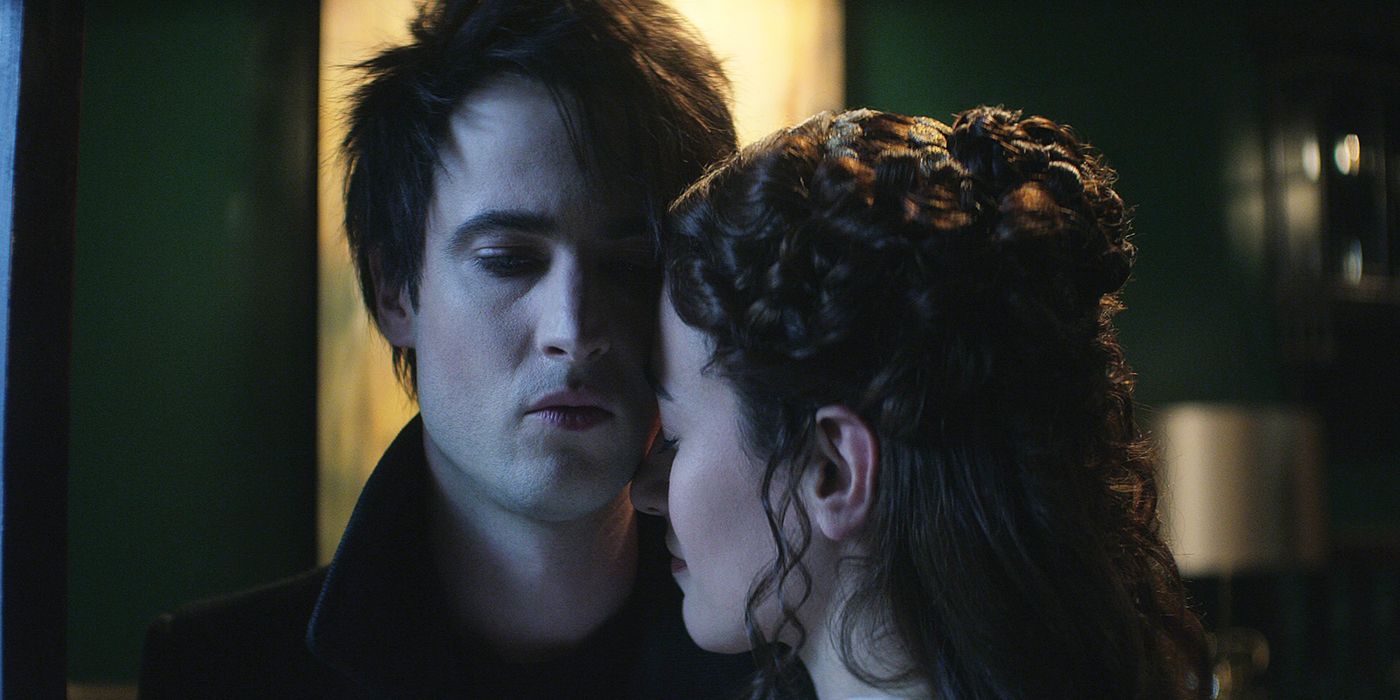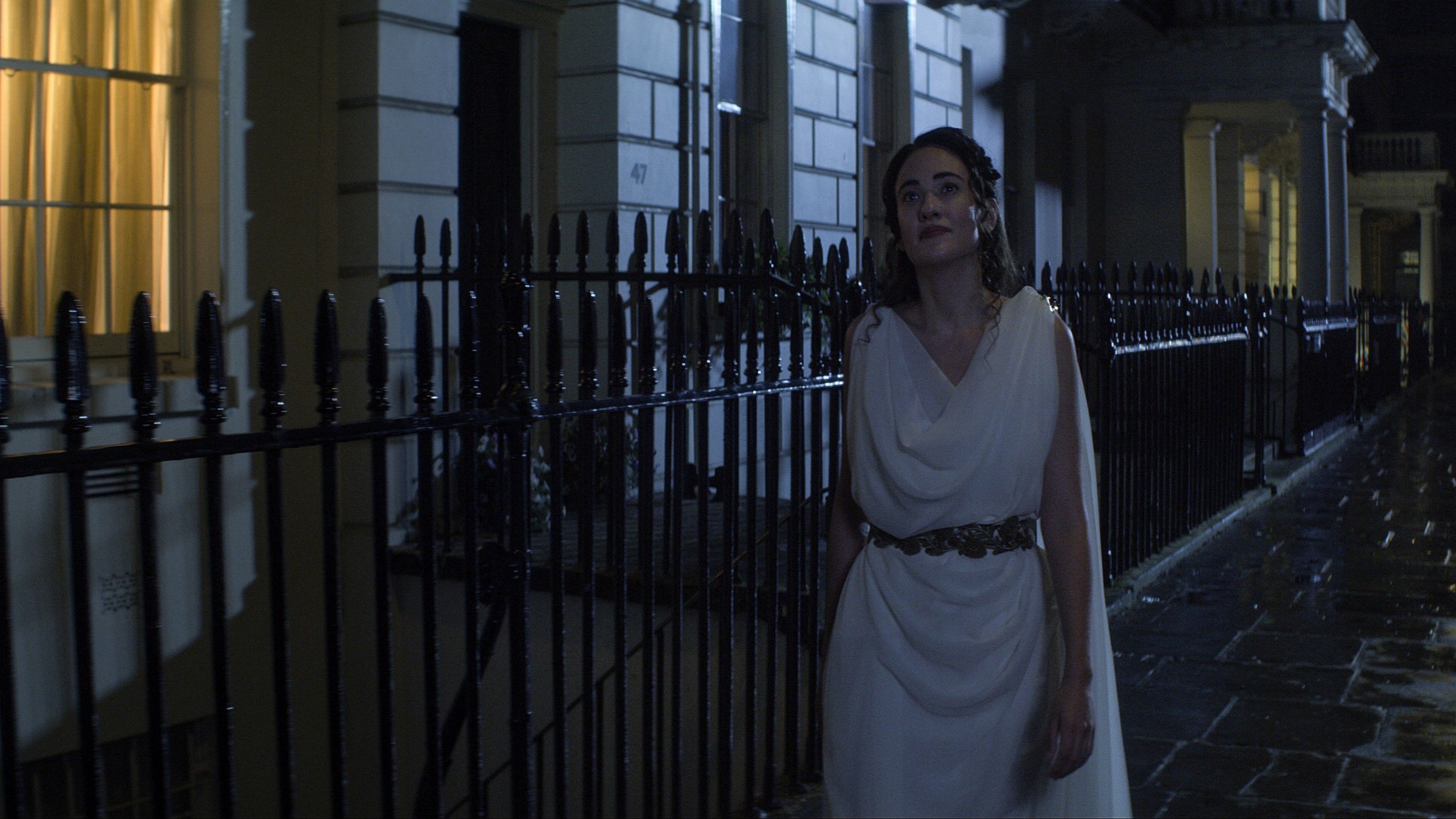Editor's note: This article contains mentions of abuse and sexual assault.With the release of the bonus episode of The Sandman, Neil Gaiman gives a brutally stark portrayal of the relationship between artist and muse and how it often intertwines with female inequality. The second act of the episode focuses on a struggling writer, Richard Madoc (Arthur Darvill), and his desperation to reclaim some of the success he achieved with his debut novel. Driving himself to extremes, he enslaves the Greek muse Calliope (Melissanthi Mahut), abusing her in the name of inspiration.
Pop culture has elevated the concept of the muse as some sort of enviable status; however, in reality, they often suffer at the hands of those who claim to uphold and worship them. The story is retold countless times in film and television, for instance, in the character Maria Elena (Penelope Cruz) in Vicky Cristina Barcelona or Edie Sedgwick (Sienna Miller) in Factory Girl. But never has the story been told so plainly than in The Sandman, where the viewer is shown in no uncertain terms that many muses end up collateral damage in the artist’s quest for meaning and acclaim.
'The Sandman' Dispels the Belief That the Relationship Between Artist and Muse Is Equal
From the beginning, Erasmus Fry (Derek Jacobi) and Richard Madoc justify the atrocities they commit against Calliope by viewing her as a possession and falling back on the support of the law. She was ensnared on Mount Helicon by Fry as he burned her scroll and proclaimed himself her master. He goes on to tell Madoc that she is lawfully bound to him now. But as history knows, what is lawful is not always what is right and Madoc effectively looks the other way whenever he is faced with the stark truth of his actions. In the beginning scene of the episode, Madoc stands in front of a slide centering the words "Controlling the Narrative." Later, he assigns his students the task of writing the same event from two very different perspectives. The Sandman highlights Madoc’s ability to separate himself from his actions and even cast himself as a victim, retorting to Calliope that he is the one who isn’t free when she pleads for her liberation. He enslaves and repeatedly sexually assaults her, Madoc possesses all the power, and yet, he can twist the narrative to both get what he wants and also maintain his belief that he is inherently good. All this is in the name of art and public recognition. Madoc can do this by reminding himself of Fry’s words: “She’s not human…her purpose is to serve men like us.”
The idea of the muse is typically gendered; she is young and beautiful, set apart from the rest. However, a muse’s relationship with the artist is devastatingly ephemeral, and once they have "served their purpose," they are cast aside as the artist seeks out his newest creative conquest. They are essentially chewed up and spat out, causing great pain and confusion as these women must deal with being cherished and revered one minute and dismissed and ignored the next. These artists go on to attain godlike status for their ability to represent the human condition in all its forms without taking accountability for how they were able to do so. Their recklessness with these women’s lives is always justified in the name of inspiration and talent. All damage inflicted by them gets labeled as either necessary or irrelevant in the face of such genius. Society has proven it will forgive a man’s most heinous acts if he is talented enough, many supporting the works of Roman Polanski, Woody Allen, and R. Kelly, throughout their allegations and convictions. In a striking parallel, Allen had previously been respected for his portrayal of strong female leads in his works.
Neil Gaiman Shows the Atrocities Entitled Men Will Commit
Throughout their role as captors, both Erasmus and Madoc treat Calliope with resentment and contempt. Despite Calliope being responsible for all they have achieved, she is a stark reminder of their cruelty, casting a shadow over whatever success they strove to attain. Madoc sees her as unreasonable and ungrateful, a poorly veiled attempt at villainizing her in order to hold on to his self-image. She refuses to let him off the hook for what he has done to her, and he hates her for it. She does not conform to the role he wishes she would play. This is strikingly similar to other representations of muses in pop culture. In Factory Girl, Andy Warhol (Guy Pearce) is enraged at his muse Edie Sedgwick for stepping out of the part he cast her in. Viewing her as his possession and enraged that she loves another, he cruelly turns against her, making her a social pariah in the process. In Vicky Cristina Barcelona, Juan Antonio (Javier Bardem) becomes upset whenever Maria Elena presents him with the truth that “[his] whole way of seeing is [hers],” causing him to belittle her beliefs about the situation. He offers her no acknowledgment, credit, or validation, which only heightens her emotions on the matter. Even watching what this does to her, Cristina (Scarlett Johansson) still envies Maria Elena’s status as muse, stating that she’s a little sad she doesn’t inspire Juan in that way. To be a muse in her eyes is to be wanted, to be admired, and placed on a pedestal. Cristina is blind to the subtle ways Juan Antonio belittles Maria Elena in an effort to maintain power. Maria Elena struggles with their relationship, driven to violence by his treatment of her.
In the real world, many artists have been remembered by history for their role as muses to famous male artists. One of the most known is Camille Claudel, who was an exceptionally talented French sculptor, whose work was an act of rebellion against the role people expected her to play. Unfortunately, much of her legacy is shadowed by her love affair with Auguste Rodin, another sculptor who adopted much of Claudel's style and technique. Rodin took credit for much of Claudel’s artistic vision throughout their affair and when she broke away from him, he went out of his way to block her work as much as possible. Rodin began to see Claudel as a rival and used his position of power to weaken her. Claudel faced many challenges and traumas in life, from her family, Rodin, and society at large, and was eventually sent to an asylum for over 30 years before passing away. It is still unclear if she was forced into it by her family who would benefit from the decision.
In The Sandman, Madoc is consistently others for his ability to harness the female voice. Never does he admit that he stole said voice. Instead, he proclaims himself quite the feminist writer even as Calliope is locked away in the room above, dreading the next time he decides to take her gifts. However, in the end, inspiration becomes his downfall as Gaiman flips the script and Madoc becomes the one to descend into madness, overcome with ideas. After uttering the words to free Calliope, he suddenly becomes unable to form a coherent thought. The only spark that does remain, is that “the ideas, the stories… were all hers.” Calliope goes on, ready to use her voice to change the laws that she and her siblings had no hand in writing. The episode ends with the muse being empowered, and the audience can find a sense of justice and satisfaction in this ending that so rarely represents its real-life counterparts.
The Sandman is currently available to stream on Netflix.



